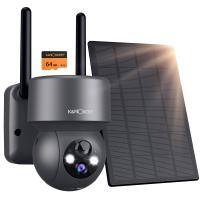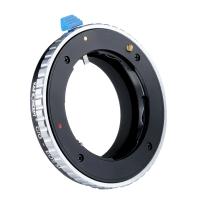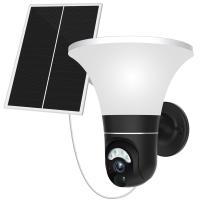What Are Inverted Microscopes Used For ?
Inverted microscopes are used for observing and analyzing samples that require a larger working distance or are too thick to be observed with a traditional upright microscope. They are commonly used in biological and biomedical research, as well as in industrial applications such as quality control and material science. Inverted microscopes are particularly useful for studying living cells and tissues in culture, as they allow for the examination of samples in a more natural and controlled environment. They are also commonly used in techniques such as fluorescence microscopy, phase contrast microscopy, and confocal microscopy, which enable researchers to visualize specific structures or molecules within the sample. Overall, inverted microscopes play a crucial role in various scientific disciplines by providing detailed and accurate observations of samples that cannot be easily examined with other types of microscopes.
1、 Biological research and observation at high magnification.
Inverted microscopes are widely used in biological research and observation at high magnification. These microscopes have a unique design where the objective lens is positioned below the stage, while the light source and condenser are located above the stage. This inverted configuration allows for the examination of samples that are too large, thick, or complex to be observed using traditional upright microscopes.
One of the primary applications of inverted microscopes is in cell culture research. The design of these microscopes allows for the direct observation of cells growing in a culture dish or a well plate. Researchers can monitor cell behavior, growth, and interactions in real-time, making it an invaluable tool in studying cell biology, tissue engineering, and regenerative medicine.
Inverted microscopes are also used in live cell imaging. The ability to observe cells in their natural environment without disturbing their growth or behavior is crucial for understanding dynamic cellular processes. With the use of specialized techniques such as fluorescence microscopy, researchers can label specific cellular components or molecules and track their movements and interactions over time.
Furthermore, inverted microscopes are employed in various other fields of biological research, including developmental biology, neuroscience, and microbiology. They are used to study embryo development, neuronal activity, and microbial behavior, respectively. Inverted microscopes equipped with advanced imaging technologies, such as confocal microscopy or super-resolution microscopy, provide even higher resolution and detailed imaging capabilities.
In recent years, there has been a growing interest in using inverted microscopes for 3D cell culture and organoid research. These microscopes enable researchers to visualize and analyze complex multicellular structures, such as organoids, which closely resemble the architecture and functionality of organs in the human body. This advancement has opened up new avenues for studying disease mechanisms, drug discovery, and personalized medicine.
In conclusion, inverted microscopes are essential tools in biological research and observation at high magnification. Their versatility and ability to observe samples in their natural environment make them invaluable for studying cellular processes, tissue development, and disease mechanisms. With the continuous advancements in imaging technologies, inverted microscopes will continue to play a crucial role in advancing our understanding of the intricate world of biology.

2、 Examination of transparent or thin specimens in life sciences.
Inverted microscopes are primarily used for the examination of transparent or thin specimens in life sciences. Unlike traditional microscopes where the objective lens is located above the specimen, inverted microscopes have the objective lens positioned below the specimen stage. This unique design allows for the observation of samples that are too thick or large to fit on a standard microscope slide.
One of the main applications of inverted microscopes is in cell culture research. They are commonly used to observe and analyze living cells in a controlled environment. The inverted design allows researchers to view cells growing on the bottom of a culture dish or well plate, providing a more natural and realistic perspective of cell behavior. This is particularly useful for studying cell morphology, cell division, and cell interactions.
Inverted microscopes are also widely used in the field of developmental biology. They enable researchers to study the growth and development of embryos and other small organisms. By placing the specimen on the stage and using specialized objectives, scientists can observe the intricate processes of embryogenesis and gain insights into the mechanisms underlying development.
Furthermore, inverted microscopes are utilized in various other life science applications such as tissue engineering, neuroscience, and microbiology. They are particularly valuable for studying samples that require a large working distance, such as thick tissue sections or 3D cell cultures.
In recent years, there have been advancements in inverted microscope technology, including the integration of fluorescence imaging capabilities. This allows researchers to visualize specific molecules or structures within cells using fluorescent dyes or proteins. The combination of inverted microscopy and fluorescence imaging has revolutionized many areas of biological research, enabling scientists to study cellular processes and interactions with high precision and specificity.
In conclusion, inverted microscopes are essential tools in life sciences for examining transparent or thin specimens. Their unique design and capabilities make them indispensable for studying living cells, developmental processes, and various other biological phenomena. With ongoing technological advancements, inverted microscopes continue to play a crucial role in advancing our understanding of the complexities of life.

3、 Analysis of cell cultures, tissues, and microorganisms.
Inverted microscopes are widely used in various scientific fields, particularly in the analysis of cell cultures, tissues, and microorganisms. These microscopes have a unique design where the objective lens is positioned below the stage, allowing for the examination of samples from the bottom. This inverted configuration offers several advantages and applications in biological research.
One of the primary uses of inverted microscopes is the analysis of cell cultures. In cell biology, researchers often grow cells in a culture dish or a well plate. Inverted microscopes enable scientists to observe and monitor the growth, behavior, and interactions of cells in real-time. This is crucial for studying cell morphology, cell division, cell migration, and cell-cell communication.
In addition to cell cultures, inverted microscopes are also used for the analysis of tissues. Tissue samples can be placed on a glass slide or a petri dish and observed under the microscope. This allows researchers to study the structure, organization, and function of different tissues, such as epithelial tissues, muscle tissues, and nervous tissues. Inverted microscopes are particularly useful for imaging thick tissue sections or 3D tissue models.
Furthermore, inverted microscopes play a vital role in the examination of microorganisms. Microorganisms, including bacteria, fungi, and protozoa, can be observed and studied using inverted microscopes. This is essential for identifying and characterizing different types of microorganisms, studying their growth patterns, and investigating their interactions with other organisms or their environment.
In recent years, there have been advancements in inverted microscopy techniques. For example, fluorescence microscopy has become a powerful tool in cell biology and microbiology. Inverted microscopes equipped with fluorescence capabilities allow researchers to visualize specific molecules or structures within cells or microorganisms. This enables the study of protein localization, gene expression, and cellular processes at a molecular level.
In conclusion, inverted microscopes are extensively used for the analysis of cell cultures, tissues, and microorganisms. They provide researchers with a versatile tool to observe and study biological samples from the bottom, allowing for real-time monitoring and detailed analysis. With the advancements in microscopy techniques, inverted microscopes continue to contribute to our understanding of cellular and microbial biology.

4、 Study of living organisms in their natural environment.
Inverted microscopes are primarily used for the study of living organisms in their natural environment. Unlike traditional microscopes, which have the objective lens located above the specimen, inverted microscopes have the objective lens positioned below the specimen. This unique design allows for the examination of samples that are too large, too thick, or too delicate to be mounted on a slide.
One of the main applications of inverted microscopes is in cell biology research. By observing cells in their natural environment, researchers can gain valuable insights into their behavior, interactions, and responses to various stimuli. Inverted microscopes are particularly useful for studying cells in culture, as they allow for the examination of cells growing on the bottom of a petri dish or in a multi-well plate.
In addition to cell biology, inverted microscopes are also used in other fields such as developmental biology, neuroscience, and microbiology. They enable researchers to study the growth and development of organisms, observe neuronal activity in living brain tissue, and investigate the behavior of microorganisms in their natural habitats.
Furthermore, inverted microscopes have found applications in clinical and medical research. They are used for examining tissue cultures, studying the effects of drugs on living cells, and observing the behavior of pathogens in host cells. Inverted microscopes are also used in fertility clinics for the assessment of sperm motility and morphology.
In recent years, there has been a growing interest in using inverted microscopes for live imaging and time-lapse microscopy. Advances in imaging technology, such as the development of high-resolution cameras and fluorescent probes, have made it possible to capture dynamic processes in real-time. This has opened up new avenues for studying cellular dynamics, intracellular signaling, and tissue morphogenesis.
Overall, inverted microscopes play a crucial role in the study of living organisms in their natural environment. They provide researchers with a powerful tool to investigate the complexities of life at the cellular and molecular level, leading to a deeper understanding of biological processes and potential applications in various fields.








































